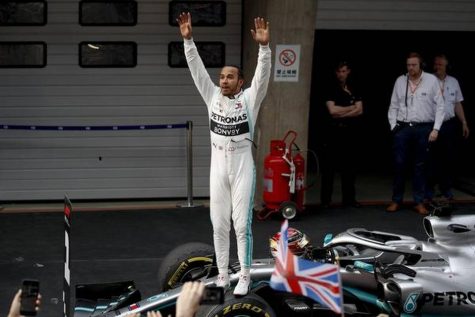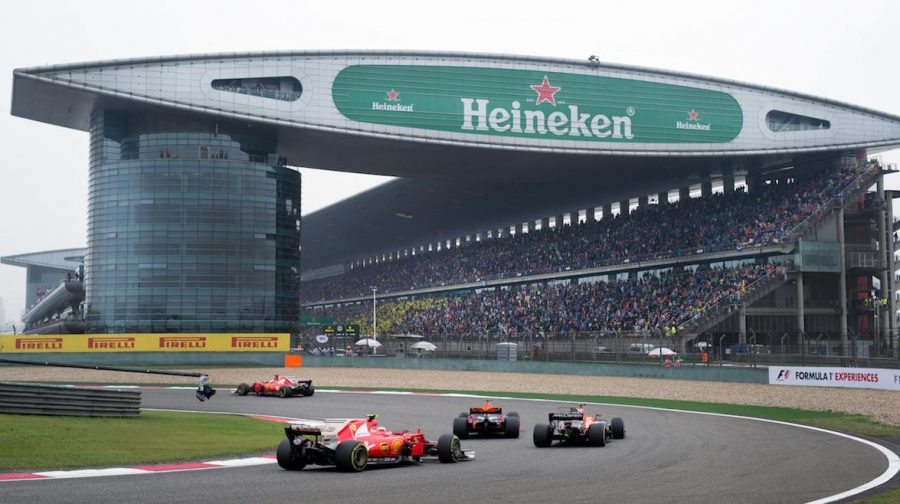Formula 1 Overview
Photo Credit: f1destinations.com
Shanghai Grand Prix venue.
The 2019 Formula 1 Grand Prix Race Calendar has officially begun, and this season does not look like it is going to disappoint. With the stage set for what looks to be an amazing season, it only seems right to give a brief overview of the sport, and explain some of the inner politics that make F1 the action-packed, drama-filled world spectacle it is.
Formula 1 is largely considered the highest class sport of its kind, requiring the most skill, the best technology, and deepest pockets out of any racing sport (or normal sport for that matter) in the world. With all of the buzz surrounding it, not many Americans are familiar with the ruleset, or the way the race even works.
Charlie Bass, junior at Adams High School demonstrated his extensive knowledge of Formula 1.
“What do I know about F1… Well, the cars are fast,” said Bass.
The rules of F1 are quite simple in theory, but demand the most precise execution for any hope of success, with every lap counting just as much as the last. All races are 305 kilometers, or about 189 miles, in length. The Monaco Grand Prix is the one exception, coming in at 260 kilometers. The amount of laps driven each race varies due to the periodically changing venue. Accompanying every venue is a specific set of characteristics to each track. Drivers need to prepare differently for track from race to race. Special tires, and weather specific equipment, both are contributors to racers finishing as fast as possible.
The landscape of Formula 1 currently has the layout of 10 teams, each with 2 drivers, and a grand total of 20 cars on the track each Grand Prix. Drivers are given one practice day (typically the Friday prior to race day) to become well-acquainted with the track. Once practice day is over, racers move onto the qualifying day (usually the Saturday right before race day). Here, drivers try to clock in their fastest possible times to score the best possible starting position for their team on race day. The faster your time is relative to other competitors, the better starting position you will be given. Finally, on race day (normally the Sunday following qualifying), drivers go head-to-head and try to finish in the best position amongst the pack. Based on the way they finish, drivers are awarded points that accumulate throughout the season. At the end of the season, the driver with the most points wins.

Lewis Hamilton (Mercedes) placing first in the Shanghai Grand Prix.
As mentioned, Formula 1 is undeniably the richest sport in the world. With the likes of Ferrari, Mercedes, and Red Bull making up the top three teams currently in the sport, there are undeniably some big names trying to secure their spot as number one. So far this season, four of the twenty-one races have been completed, and the top three seems to be following suit from last season. Mercedes is currently seated first, followed by Ferrari, and Redbull. The trend of teams battling to be “the best of the rest” continues into this season with Mclaren, Renault, Alfa Romeo, and American owned team, Haas, waging war for fourth place. One of the biggest current disappointments in the F1 standings is team Mclaren. Having finished sixth last year in the standings, the team got off to a slightly more promising start this year, currently seated in fourth place, the coveted best of the rest.
With this year looking promising, and the season currently only four races in, a whole year of action-packed races awaits us. The battle among the three giants of the sport continues on, and the competition to be “the best of the rest” is ever present. Mclaren looks to redeem themselves in the following races, and there is always the possibility of a new team making their mark on the standings. Get ready for yet another great season of F1.









